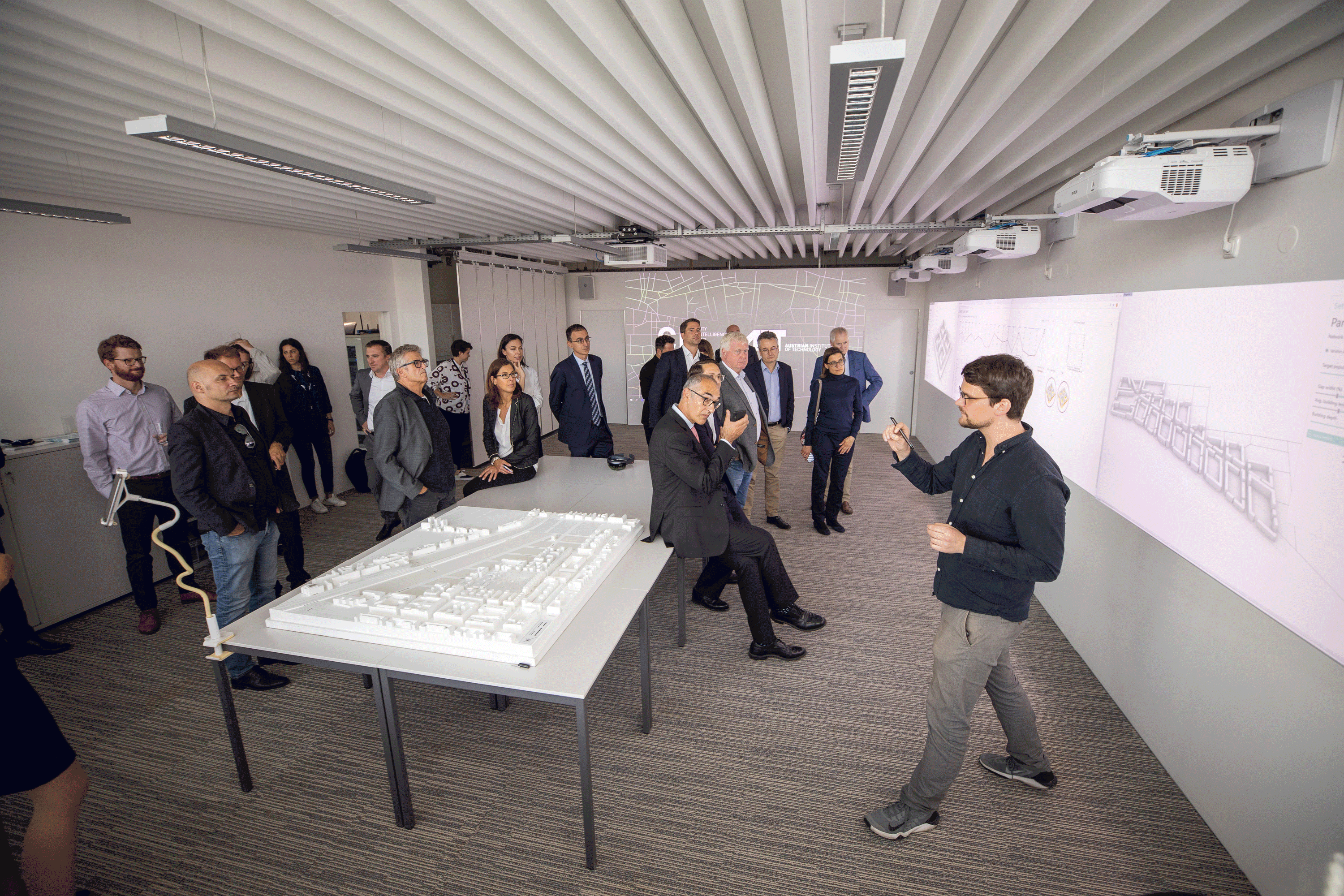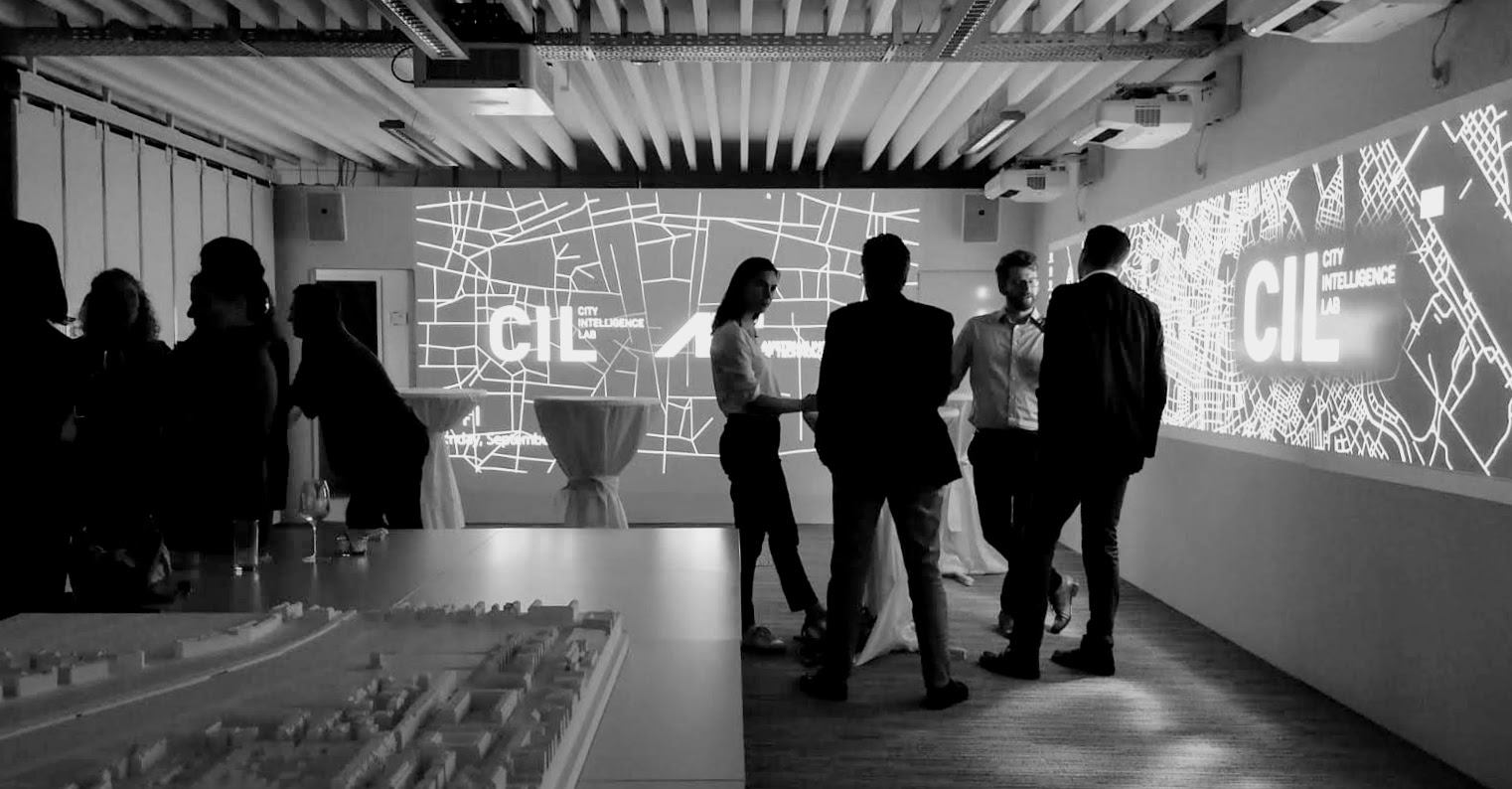City Intelligence Lab Opening
On September 9th, 2019, the City Intelligence Lab (CIL) opened its doors to the public for the first time. The CIL board members, invited partners and press representatives were introduced to the lab and enjoyed a showcase of what our computational approach offers to the future of urban planning and design.
AIT’s Managing Director, Anton Plimon and the Director of Planning of the City of Vienna, Thomas Madreiter inaugurated the CIL by drawing the lab’s virtual curtain.
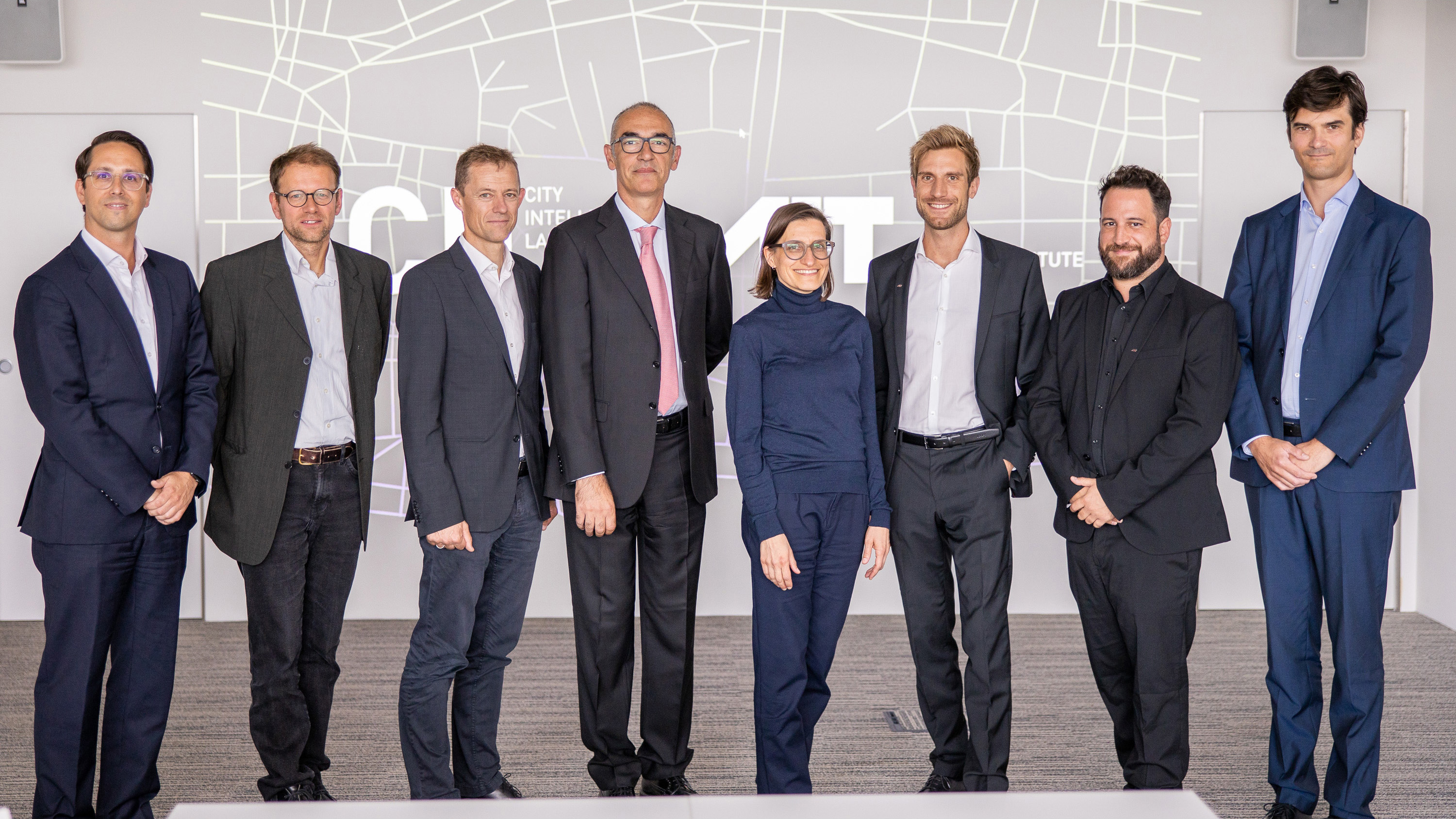
AIT board members
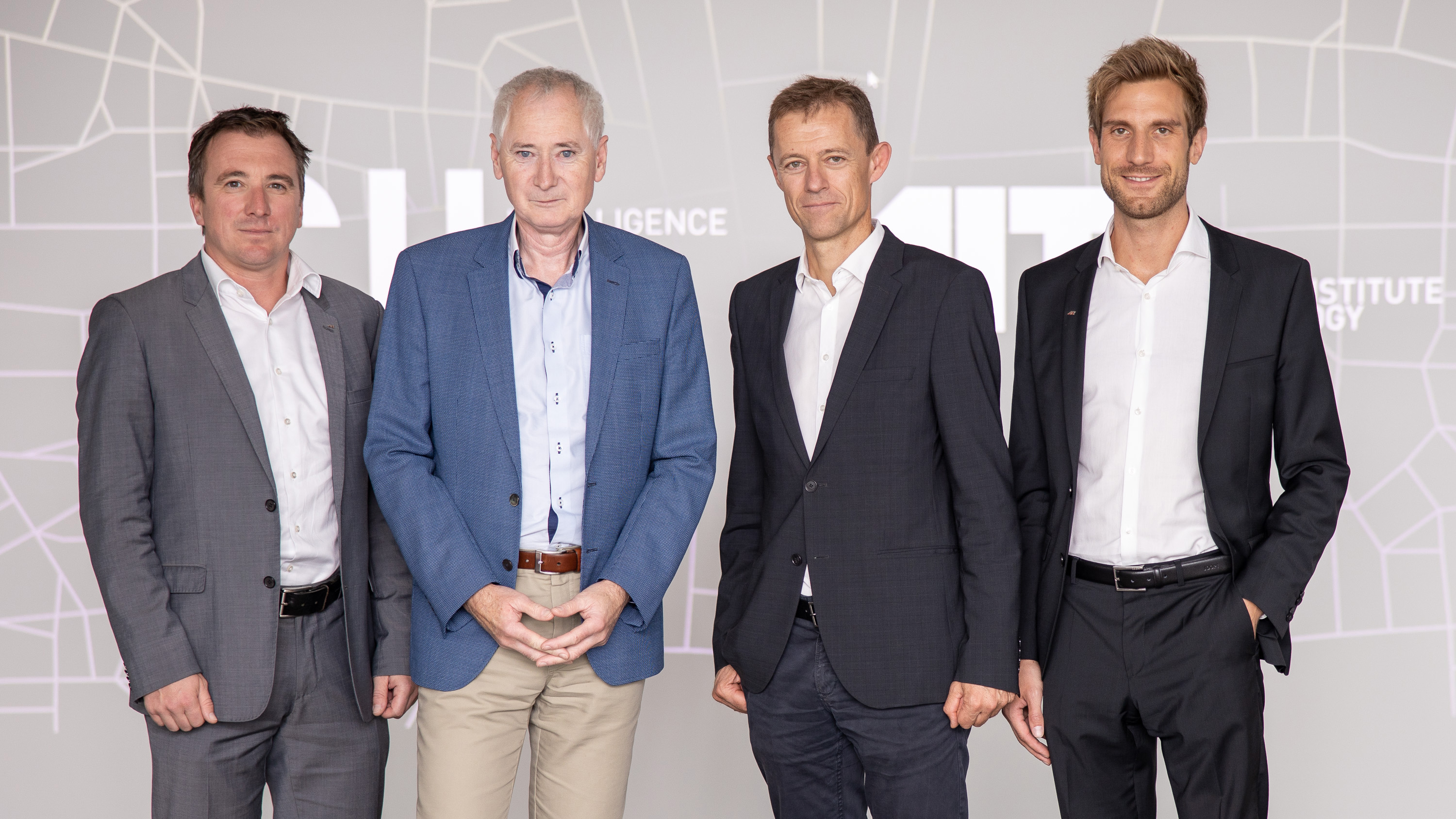
Wolfgang Hribernik, Anton Plimon, Thomas Madreiter, Nikolas Neubert
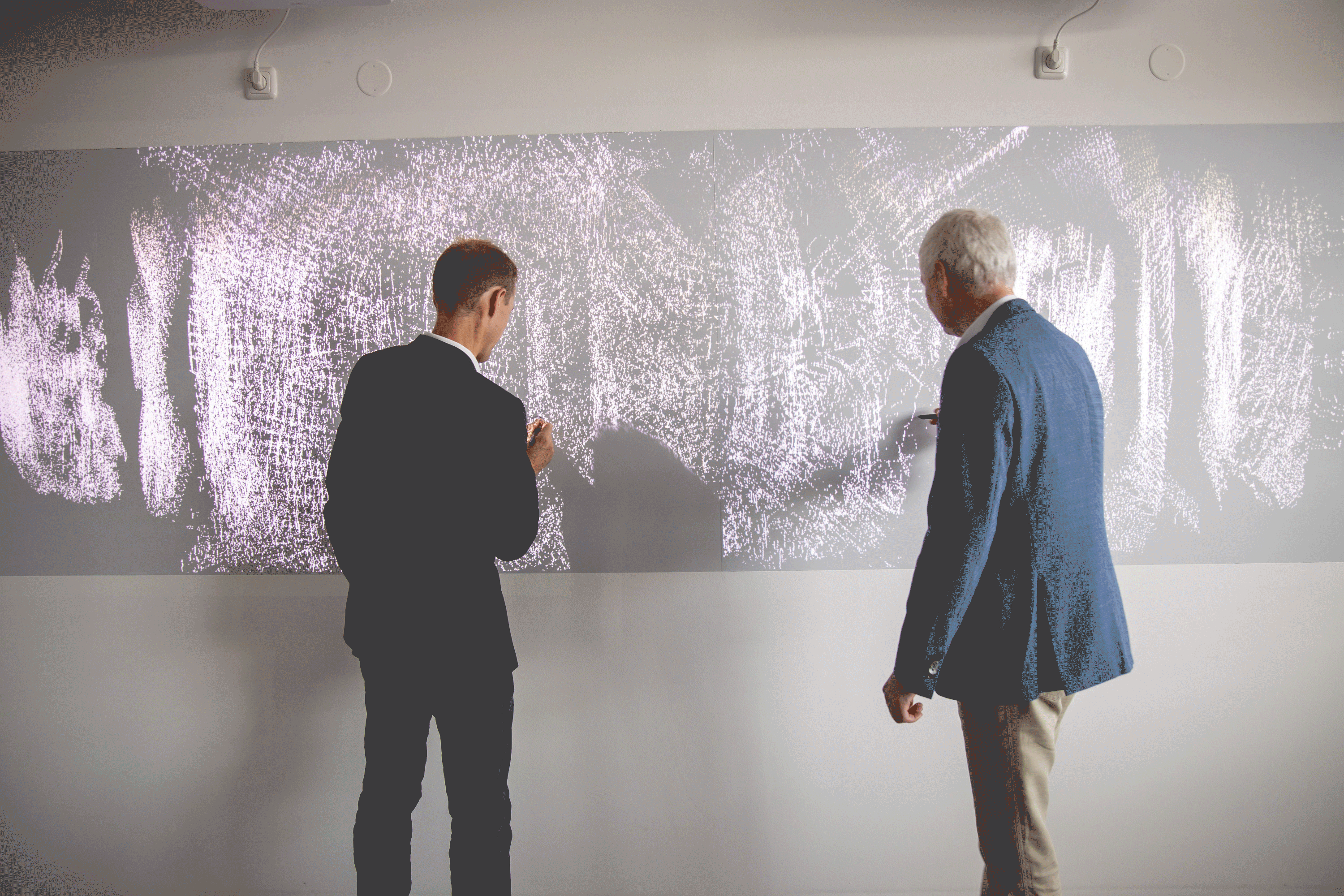
A new approach to urban planning
Nikolas Neubert, head of the Unit for Digital Resilient Cities, along with Wolfgang Hribernik, head of the Centre for Energy, introduced the lab and its team.
Angelos Chronis, head of the City Intelligence Lab, and the lab’s research team Anna Aichinger, Serjoscha Düring and Theresa Fink, showed how we hope to transform the urban planning workflow in the lab. Our approach combines our computational and urban research expertise with state-of-the-art technologies such as Artificial Intelligence and Augmented Reality.
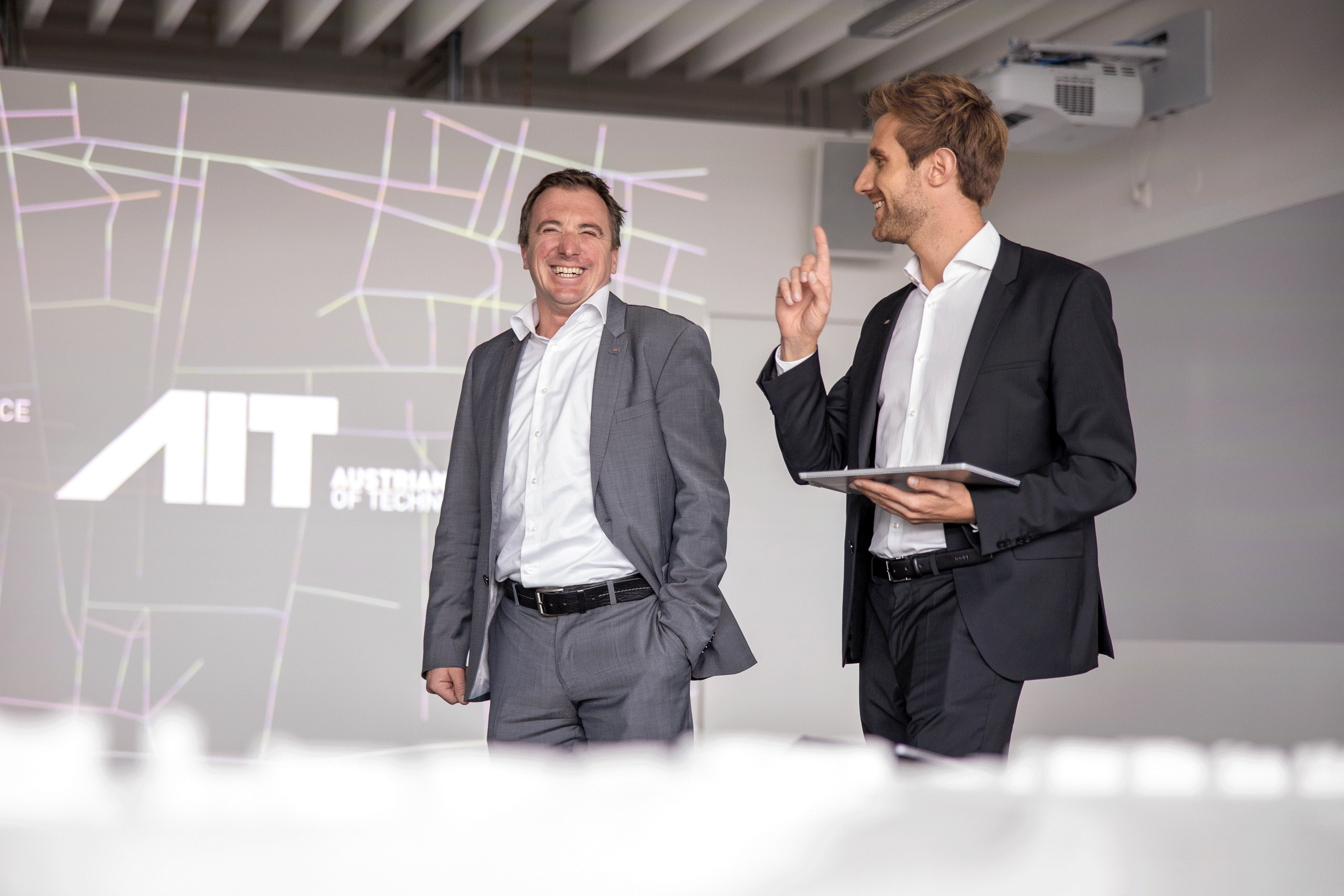
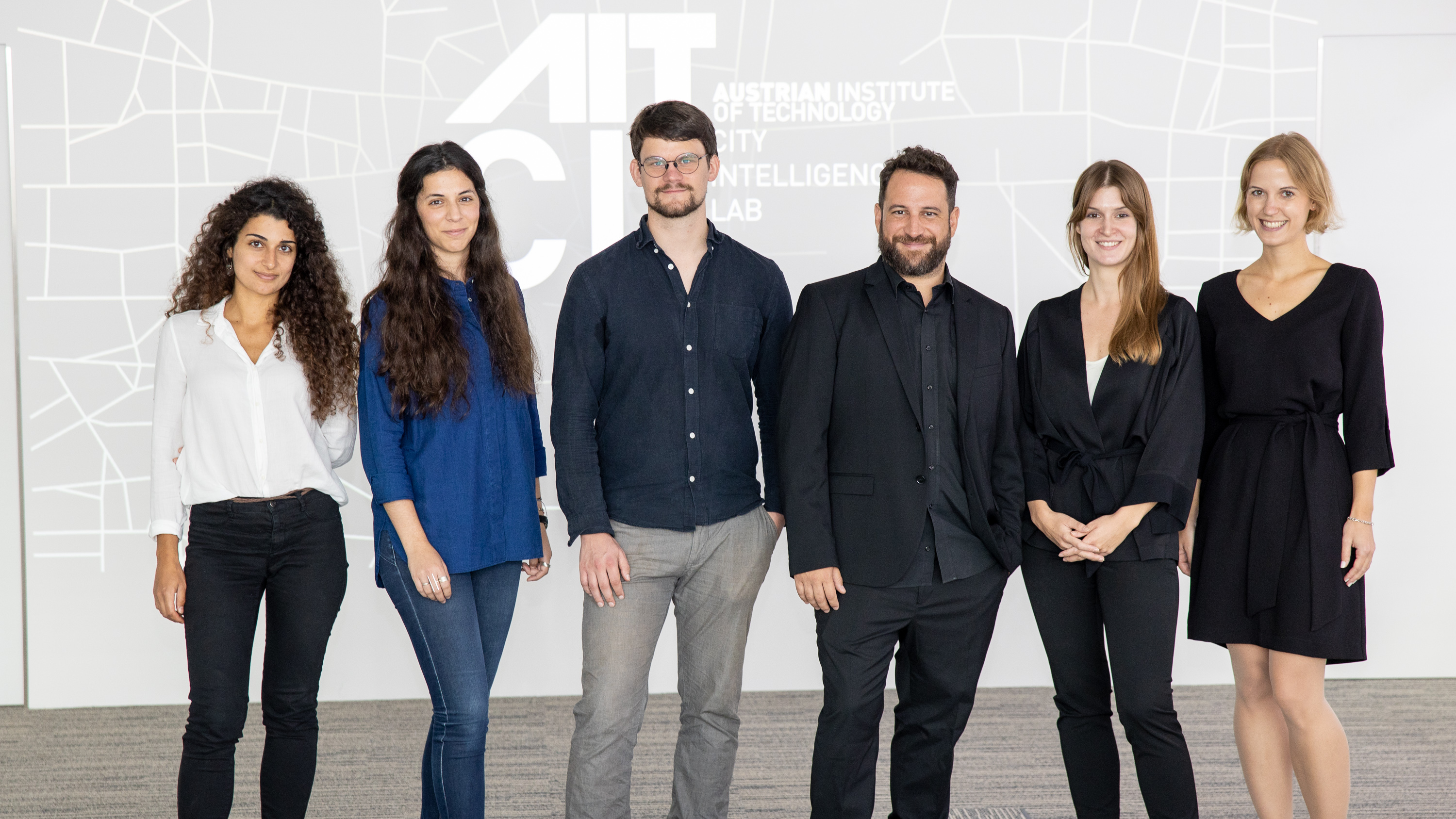
An intelligent framework for resilient planning and design
The CIL opening showcased our newly developed Intelligent Framework for Resilient Design (InFraReD), encompassing cutting edge machine learning techniques, AI optimisation, interactive web interfaces and augmented reality models. The framework enables a seamless collaboration environment that provides real time performance feedback to designers, municipalities, consultants, planners and all other stakeholders of the planning process.
We backed our framework with a large simulation database produced in the lab, allowing us to train neural networks to instantly predict performance parameters of a design, such as wind, solar radiation and thermal comfort. In this way, the framework provides immediate responses to design problems. Using the artificial intelligence capabilities of our models, a vast exploration of design alternatives can be performed in real time. Different design parameters and performance objectives can be negotiated in a fast, comprehensive and intelligent way.
These intelligent design capabilities come together in InFraReD‘s front end: web interfaces and augmented reality grant us a natural way of interaction with the planning intelligence produced, forming altogether an interactive, accessible and AI-augmented collaboration platform.

A collaborative workflow in three steps
Our showcase was launched with showing a parametric model of a simple urban block, backed with our real-time AI simulation predictions. We showed how a designer can very quickly generate designs from a simple set of design parameters and get real time simulation results for the wind, the sun and the thermal comfort of the streets. Communication with planners, clients and other stakeholders can now be straightforward and instant, as we provide real-time feedback on the performance of a design.
Then we went one step further by using generative design to simultaneously generate thousands of solutions for that same urban block. Using a popular design space exploration tool, we narrowed down the selection of designs based on the design and planning goals that we want to achieve.
Last but not least, we physically interacted with our planning proposals using our augmented reality framework, allowing us to visualise our digital results within an actual physical model and quickly adjust building massings, again receiving real-time performance feedback for our designs. In this case we generated a whole neighborhood in the former Nordbahnhof station of Vienna.
We ended the workflow demonstration with something a little more lighthearted; an urban planning game that the attendees got to experience.
The use of innovative technologies for urban planning and design through a front-end and a back-end approach forms the identity of the physical and intellectual space called CIL. The result is a cognitive and collaborative design process capable of providing stakeholders with immediate answers to their questions.
